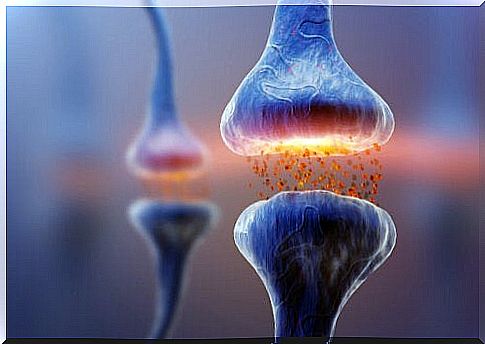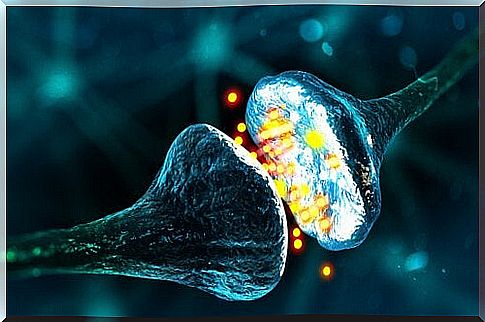Types Of Synapses: Neuronal Communication

For the brain to function properly, neurons must be able to communicate with each other. These functional interactions between neurons are called synapses. But how does this interconnection occur? How many types of synapses are there?
Apparently, two main modes of synaptic transmission are recognized: the electrical synapse and the chemical synapse. In general, synaptic communication usually occurs between the axon termination (the longest part) of the transmitting nerve cell and the cell soma of the receiving neuron.
However, contrary to what one might think, such communication does not take place by direct contact. Neurons are separated from each other by a small groove – the synaptic or inter-synaptic space. As we will see in this article, in fact, the two types of synapses are interneuronal connections, but each type has its own characteristics. If you want to know them and find out more, read on!

Types of synapses
The chemical synapse
In the chemical synapse, information is transmitted by neurotransmitters. This is why this synaptic connection is called “chemistry”. Neurotransmitters have the job of getting the message across.
These synapses are asymmetrical which means that they do not occur exactly the same from one neuron to another. They are also unidirectional: the post-synaptic neuron, the one that receives the synapse, cannot transmit information to the pre-synaptic neuron, which sends the synapse.
The chemical synapse has other specific characteristics. For example, it exhibits high plasticity, meaning synapses that have been most active will transmit information more easily. This plasticity allows adaptation to changes in the environment. Our nervous system is intelligent and favors those communication paths that we use most frequently.
This type of synapse has the advantage of being able to modulate the transmission of the impulse. But how does he do it? Thanks to the ability to modulate three aspects:
- The neurotransmitter.
- The frequency of emission.
- The intensity of the pulse.
In summary, the chemical transmission between neurons is produced by neurotransmitters that can be modified. Having said that, all that remains is to analyze the transmission of the chemical synapse in its functioning :
How the chemical synapse works
- The neurotransmitter is synthesized and stored in vesicles.
- An action potential invades the pre-synaptic membrane.
- Hence, depolarization of the pre-synaptic terminal results in the opening of voltage-dependent calcium channels.
- The influx of calcium through the channels is favored.
- This mineral causes the vesicles to fuse to the pre-synaptic membrane.
- Once this is done, the neurotransmitter is released into the synaptic cleft via exocytosis.
- The neurotransmitter binds to receptors in the postsynaptic membrane.
- Subsequently, the opening or closing of the postsynaptic channels takes place.
- Hence, the postsynaptic current triggers excitatory or inhibitory postsynaptic potentials that modify the excitability of the postsynaptic cell.
- Finally, the recovery of the vesicular membrane of the plasma one takes place.

The electrical synapse
At the electrical synapses, information is transmitted via local currents. There is also no synaptic delay (the time it takes for the synaptic connection to occur).
This type of synapse exhibits some characteristics opposite to chemical synapses. First of all, it is symmetrical, bidirectional and a low plasticity. The latter element implies that information is always transmitted in the same way. In other words, when an action potential occurs in one neuron, it replicates in the next.
Can these two types of synapses coexist?
It is now known that chemical and electrical synapses coexist in most organisms and in brain structures. However, the details regarding the properties and distribution of these two modes of transmission are still being analyzed (1).
Research appears to have focused on the mechanism of action of the chemical synapse. Much less is known, therefore, about electric ones. As we explained earlier, electrical synapses were thought to be typical of cold-blooded invertebrates and vertebrates. However, a large amount of data now indicates that electrical synapses are widely distributed in the mammalian brain as well (2).
To conclude, it appears that both chemical and electrical synapses cooperate and interact widely. The speed of the electrical synapse could be combined with the plasticity of chemical transmission allowing different decisions or responses to be made to the same stimulus at different times.









